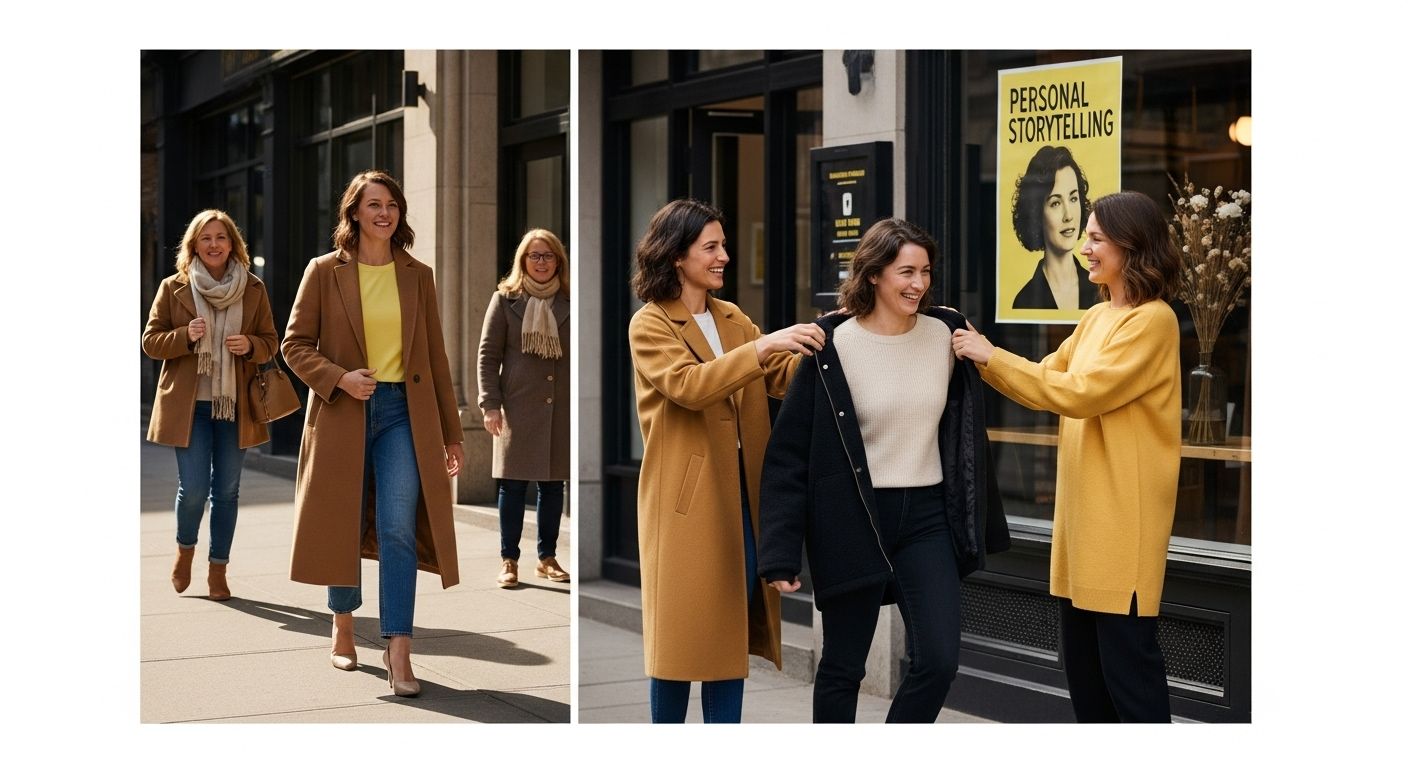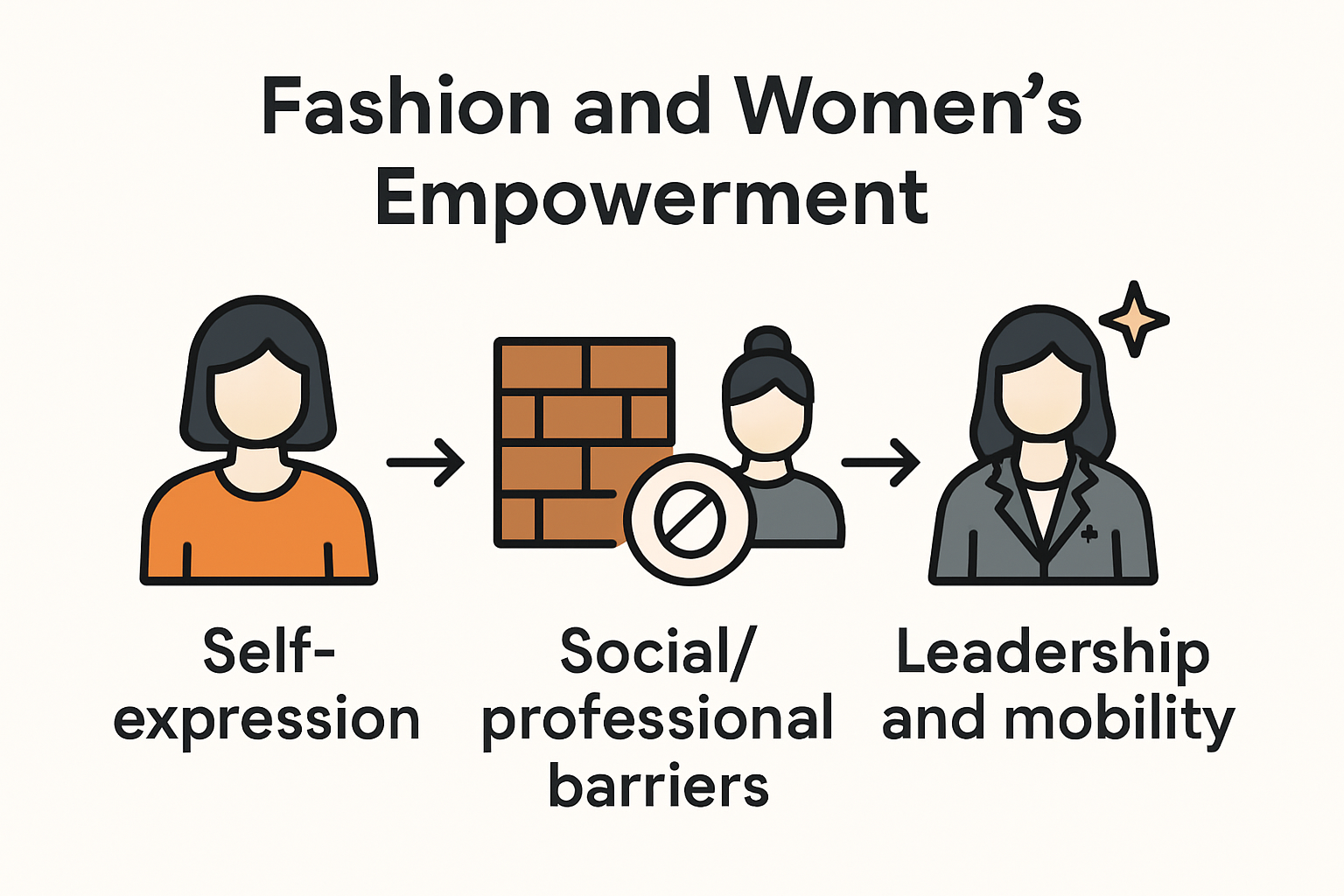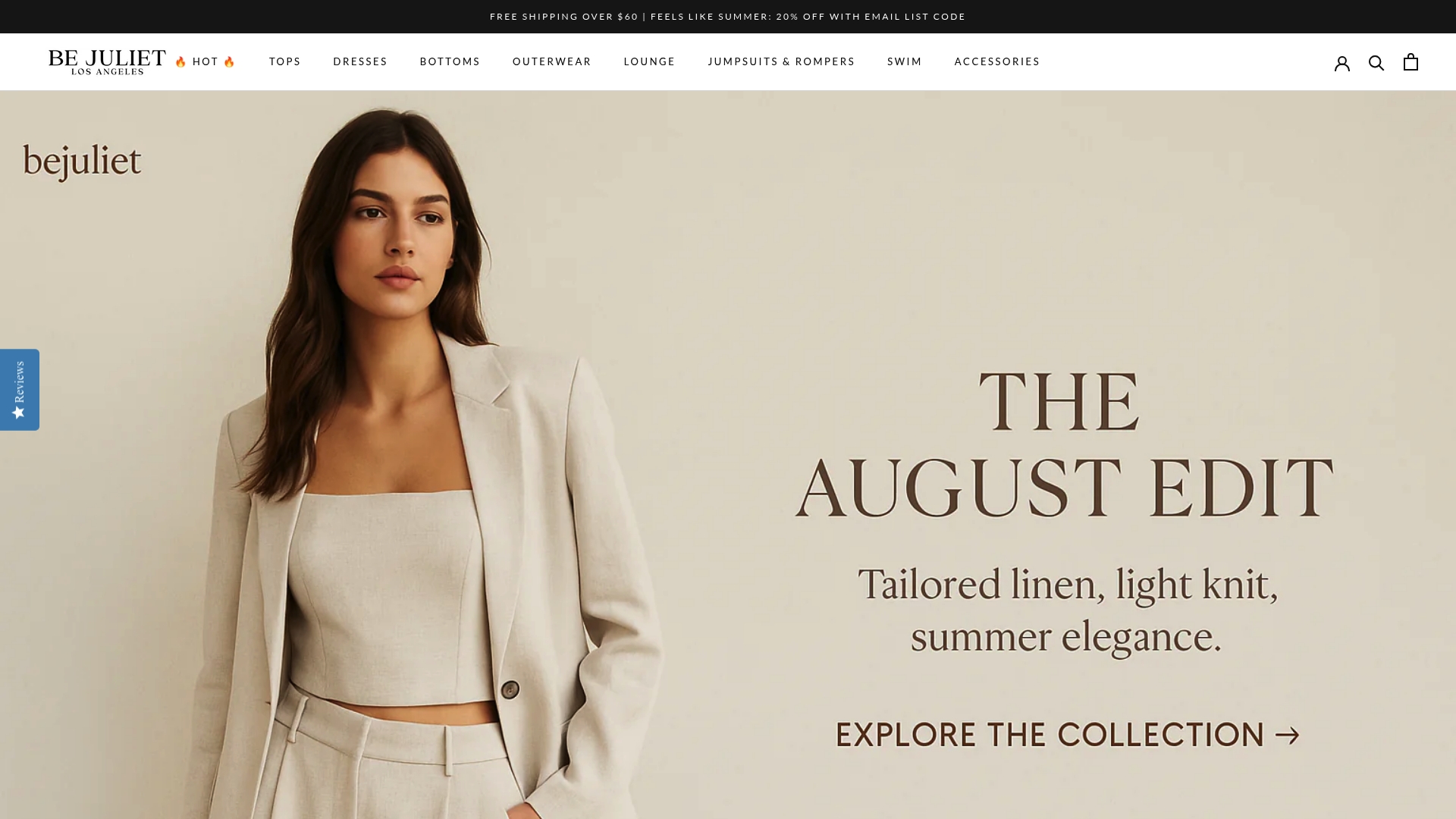Understanding Empowerment Through Fashion: A Woman's Guide
Fashion is far more powerful than picking out what looks good in the mirror. Studies show that women who enhance their appearance report higher levels of assertiveness and self-confidence. It sounds surprising at first since most people think of clothes as just fabric and trends. Yet that next outfit might be the single most effective tool you use to change how you feel and how the world sees you.

Table of Contents
- What Is Empowerment Through Fashion?
- The Importance Of Fashion In Empowering Women
- How Fashion Influences Confidence And Identity
- Key Concepts Behind Empowerment In The Fashion Industry
- Real-World Examples Of Fashion Empowering Women
Quick Summary
| Takeaway | Explanation |
|---|---|
| Fashion empowers self-expression and identity. | Clothing choices reflect personal narratives and boost confidence through visual language. |
| Intentional styling challenges societal norms. | Selecting outfits strategically helps women assert authority and challenge gender stereotypes in various settings. |
| Fashion can promote economic independence. | Women in fashion entrepreneurship create local economic opportunities and redefine participation in the industry. |
| Clothing serves as emotional protection. | The right attire can enhance self-perception, helping women navigate social situations with increased assurance. |
| Participation in fashion leads to broader representation. | Women engaging in design and leadership roles promote inclusivity and diverse narratives within the fashion industry. |
What is Empowerment Through Fashion?
Empowerment through fashion transcends mere clothing selection. It represents a profound personal journey where style becomes a powerful medium for self-expression, confidence building, and challenging societal narratives about identity and potential.
The Psychological Dimensions of Fashion Empowerment
Fashion serves as a transformative tool that allows women to communicate their inner narrative without uttering a single word. When a woman deliberately chooses an outfit that resonates with her authentic self, she creates a visual language that speaks volumes about her personality, aspirations, and inner strength.
Key psychological elements of fashion empowerment include:
- Creating a sense of personal agency and control
- Challenging external expectations and stereotypes
- Developing increased self-confidence through intentional styling
For instance, wearing a tailored blazer isn’t just about professional appearance. It symbolizes competence, authority, and a readiness to occupy space in traditionally male-dominated environments. The right outfit can fundamentally shift how a woman perceives herself and how others perceive her.
Fashion as a Form of Personal Storytelling
Every clothing choice represents a deliberate act of self-definition. Women increasingly recognize fashion as more than aesthetic decoration but as a nuanced form of personal storytelling. By curating wardrobes that reflect their multifaceted identities, women reclaim narrative power.
According to research from Stevens Institute of Technology, fashion serves as a powerful mechanism for women to build personal and professional empires, challenging traditional industry limitations.
For those interested in exploring responsible fashion choices that align with empowerment principles, learn more about ethical fashion selections.
Ultimately, empowerment through fashion is about crafting an external presentation that harmonizes with internal strength, allowing women to navigate complex social landscapes with confidence and authenticity.

To clarify the different ways fashion empowers women, here is a table summarizing key dimensions and their impact as discussed in the article:
| Dimension | Description |
|---|---|
| Self-Expression | Clothing choices reflect personal stories and individuality, fostering a sense of agency. |
| Challenging Societal Norms | Strategic styling helps challenge expectations and stereotypes in professional and social life. |
| Economic Independence | Fashion entrepreneurship creates economic opportunities and professional advancement. |
| Emotional Protection | Attire can act as psychological armor, boosting self-confidence in various environments. |
| Representation in Industry | Involvement in design and leadership boosts diverse representation and inclusivity. |
The Importance of Fashion in Empowering Women
Fashion represents far more than aesthetic choices. It is a potent instrument of personal and social transformation, enabling women to communicate identity, challenge systemic barriers, and reclaim agency in personal and professional spheres.
Breaking Social and Professional Barriers
Women have historically used fashion as a strategic tool to navigate complex social landscapes. Clothing becomes a form of nonverbal communication that challenges traditional gender expectations and signals professional competence. The strategic selection of attire can subtly communicate leadership, intelligence, and authority.
Key ways fashion breaks social barriers include:
- Challenging restrictive gender stereotypes
- Representing professional capabilities through intentional styling
- Creating visual narratives of strength and independence
A power suit, for instance, is not merely a garment but a statement of professional readiness and self-assuredness. It signals a woman’s capability to occupy leadership roles and demand respect in traditionally male-dominated environments.
Economic and Social Representation
Fashion serves as a critical platform for women’s economic and social representation. By participating in fashion design, entrepreneurship, and leadership, women challenge industry norms and create pathways for broader representation.
According to research from the Stevens Institute of Technology, fashion provides women a unique mechanism to build personal and professional empires, effectively challenging traditional industry limitations.
Discover brands championing women’s empowerment and learn how fashion can be a tool for social change.
Ultimately, fashion empowers women by providing a dynamic platform for self-expression, challenging societal constraints, and creating spaces where individual narratives can flourish beyond conventional boundaries.
How Fashion Influences Confidence and Identity
Fashion functions as a profound psychological canvas where personal identity, emotional landscape, and self-perception intersect, creating a dynamic platform for internal transformation and external representation.
The Psychology of Personal Style
Below is a table outlining the psychological mechanisms by which fashion impacts confidence and identity, synthesized from the article content for quick reference:
| Mechanism | How It Works |
|---|---|
| Personal Autonomy | Clothing choices cultivate a sense of control and self-determination. |
| Emotional Boundaries | Outfits express internal boundaries and emotional states outwardly. |
| Visual Storytelling | Style decisions communicate identity, aspirations, and mood through a visual language. |
| Self-Definition | Wearing authentic outfits reinforces and amplifies self-concept and self-assurance. |
| Emotional Armor | The right clothing strengthens courage and resilience in social and professional settings. |
Personal style is more than aesthetic preference. It represents a complex dialogue between an individual’s inner world and external presentation. Through deliberate clothing choices, women construct and communicate multilayered narratives about their personality, aspirations, and emotional state.
Key psychological mechanisms of fashion and identity include:
- Creating a sense of personal autonomy
- Expressing emotional and psychological boundaries
- Translating internal narratives into visual language
When a woman selects an outfit that authentically represents her inner self, she engages in a powerful act of self-definition. The clothing becomes an extension of her personal narrative, amplifying her confidence and communicating her unique perspective to the world.
Clothing as Emotional Armor
Clothing transcends mere fabric and design. It serves as emotional armor, providing psychological protection and enabling women to navigate complex social environments with increased self-assurance. The right ensemble can transform internal perception, influencing how women feel, interact, and project themselves professionally and personally.
According to research exploring the connection between appearance and assertiveness, women who strategically enhance their appearance report higher levels of both explicit and implicit assertiveness, demonstrating fashion’s profound psychological impact.
Explore the intricate relationship between fashion and mental wellbeing to understand how your wardrobe can be a powerful tool for emotional empowerment.
Ultimately, fashion offers women a nuanced mechanism for self-expression, enabling them to craft and communicate their identity with intention, creativity, and profound personal agency.
Key Concepts Behind Empowerment in the Fashion Industry
Empowerment in the fashion industry represents a complex ecosystem of social, economic, and cultural transformations that challenge traditional power structures and create meaningful opportunities for women across multiple dimensions.
Structural Transformation and Representation
The fashion industry’s empowerment framework extends far beyond aesthetic considerations. It encompasses systemic changes in leadership, design, production, and representation that fundamentally reshape women’s professional and creative landscapes.
Critical dimensions of industry empowerment include:
- Increasing women’s leadership in executive and creative roles
- Developing inclusive design practices that celebrate diverse body types
- Creating equitable supply chain and manufacturing environments
These structural shifts challenge long-standing patriarchal narratives that have historically marginalized women’s contributions and perspectives within the fashion ecosystem.

Economic Mobility and Professional Development
Fashion serves as a powerful economic platform for women’s professional advancement. By creating pathways for entrepreneurship, skill development, and economic independence, the industry becomes a transformative space for personal and collective empowerment.
According to research from global empowerment initiatives, targeted programs can significantly enhance women’s economic opportunities and professional trajectories within the fashion sector.
Discover brands championing women’s professional advancement and understand how fashion can be a catalyst for broader social change.
Ultimately, empowerment in the fashion industry represents a holistic approach to dismantling systemic barriers, creating inclusive environments, and recognizing women’s multifaceted talents and contributions across creative and professional domains.
Real-World Examples of Fashion Empowering Women
Fashion serves as a transformative platform where women leverage clothing, design, and industry participation to challenge systemic barriers, create economic opportunities, and amplify their collective voice across global landscapes.
Grassroots Entrepreneurship and Economic Mobility
Women around the world are using fashion as a strategic tool for economic independence and community transformation. By creating sustainable fashion enterprises, designing culturally meaningful clothing, and developing innovative business models, women are rewriting traditional narratives of economic participation.
Significant dimensions of fashion entrepreneurship include:
- Creating micro-enterprises that generate local economic opportunities
- Preserving traditional craftsmanship and cultural textile techniques
- Developing inclusive business models that prioritize women’s leadership
These entrepreneurial efforts demonstrate how fashion can be more than a commercial industry, becoming a powerful mechanism for social and economic empowerment.
Activism and Social Movement Representation
Fashion has emerged as a potent form of visual activism, enabling women to communicate complex social messages and challenge dominant power structures through strategic clothing choices and design interventions. From protest movements to cultural statements, women are using fashion as a nuanced language of resistance and solidarity.
According to research from global empowerment initiatives, targeted programs can significantly transform women’s professional trajectories and social impact within the fashion sector.
Explore brands leading women’s professional advancement and witness how fashion catalyzes broader societal change.
Ultimately, these real-world examples illustrate fashion’s profound potential as a dynamic tool for personal expression, economic empowerment, and collective social transformation.
Redefine Empowerment Through Your Wardrobe
Feeling empowered starts with how you choose to express yourself every day. If you have ever wanted your style to match your inner strength, Be Juliet is here to turn that desire into reality. Building on the article’s focus on confidence, self-expression and breaking free from expectations, our collections are designed to help you communicate your unique story through fashion. Imagine stepping out in a bold blazer or a beautifully tailored coat and feeling ready to face any challenge. Discover the transformative power of fashion with pieces that bridge self-assurance and comfort along with elegance.

Ready to curate a wardrobe that truly reflects your empowered identity? Explore our Coats & Jackets collection to make an unmistakable statement, or find laid-back confidence with our Sweaters & Sweatshirts for every relaxed moment. Dive into self-love and reinvention at Be Juliet and start building your story through fashion today.
Frequently Asked Questions
What does empowerment through fashion mean?
Empowerment through fashion refers to the idea that clothing and personal style can serve as a medium for self-expression, confidence-building, and challenging societal norms. It allows women to communicate their identities and assert their presence in various social and professional settings.
How can clothing choices affect a woman’s confidence?
Deliberate clothing choices can create a sense of personal agency and control, enhancing self-confidence. Wearing outfits that resonate with one’s authentic self can fundamentally shift how a woman perceives herself and how others perceive her, leading to increased levels of self-assurance.
What role does fashion play in personal storytelling?
Fashion acts as a nuanced form of personal storytelling by allowing women to curate wardrobes that reflect their multifaceted identities. Each clothing choice becomes a visual narrative, helping women reclaim narrative power and communicate their personal stories without words.
How can fashion help challenge societal barriers for women?
Fashion can break social barriers by serving as a form of nonverbal communication that challenges gender stereotypes and signals professional competence. Strategic clothing choices can portray leadership, intelligence, and authority, enabling women to navigate traditional professional landscapes more effectively.
Recommended
-
[ Ethics in Fashion: How to Make Responsible Choices
– Be Juliet](https://bejuliet.com/blogs/blog/ethics-in-fashion-how-to-make-responsible-choices)
-
[ Top Brands That Empower Women in Fashion and Travel 2025
– Be Juliet](https://bejuliet.com/blogs/blog/brands-that-empower-women-fashion-travel-2025)
-
[ Understanding the Difference Between Fashion and Style
– Be Juliet](https://bejuliet.com/blogs/blog/difference-between-fashion-and-style)
-
[ Fashion and Mental Health: How Your Style Impacts Your Wellbeing
– Be Juliet](https://bejuliet.com/blogs/blog/fashion-and-mental-health-how-your-style-impacts-your-wellbeing)
